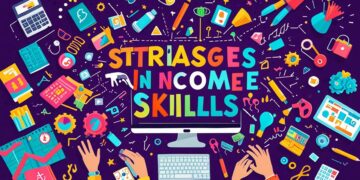Cards for freelancers and self-employed professionals

The Power of Business Cards in Networking
In today’s fast-paced and competitive market, freelancers and self-employed professionals need effective tools to showcase their skills and establish connections. One of the most powerful tools at their disposal is a well-designed business card. This small but mighty piece of paper can significantly impact your professional journey.
Business cards are more than just a means of sharing contact information; they are an extension of your identity and brand. When designed thoughtfully, they can convey:
- Your personal brand – The choice of colors, fonts, and graphics can reflect your unique style and personality. For instance, a graphic designer might opt for bold colors and modern typography, while a financial consultant may prefer a more subdued and classic design.
- Key information – A good business card includes essential details such as your name, job title, email address, phone number, and even links to your portfolio or social media profiles. Make sure this information is presented in a clear, easily readable format.
- Professionalism – A well-crafted card signifies a serious approach to your work. It tells potential clients and collaborators that you care about the details and are committed to presenting yourself professionally.
In Canada, where networking is crucial for professional growth, having a standout card can make all the difference. Whether you are a graphic designer in Toronto or a marketing consultant in Vancouver, a unique card can help you connect with potential clients or collaborators. For example, you might attend a local networking event or meet someone at a coffee shop, and that business card becomes your handshake in the digital age, allowing you to create a memorable impression amid the sea of competitors.
Moreover, the rise of digital interactions has led many professionals to explore digital business cards as a contemporary alternative. These virtual cards can be easily shared via smartphones or email, offering eco-friendly solutions for sustainability-minded clients. They often allow for interactive elements, such as video introductions or clickable links, elevating your brand further and showcasing your tech-savvy side.
Understanding the importance of these cards can lead you to create one that effectively represents you and your services. To achieve this, consider using high-quality materials, integrating a memorable design, and choosing a size that stands out without being overwhelming. Think creatively about your card’s shape or additional elements, such as embossing or QR codes, which can provide further information and enhance the tactile experience.
So, let’s delve into the essentials of crafting the perfect business card that resonates with your target audience and sets you apart in the bustling Canadian market.
CHECK OUT: Click here to explore more
Designing Your Business Card: Elements to Consider
Creating an impactful business card involves careful consideration of several elements that work together to communicate your brand effectively. As a freelancer or self-employed professional in Canada, it is essential to think about how each component can reflect your unique offerings and resonate with your audience.
1. Choose the Right Material – The feel of your business card can make a lasting impression. Opting for high-quality cardstock will communicate your professionalism. Consider choices like matte, glossy, or even textured finishes, which can elevate your card’s appeal. For example, artisan creatives might prefer a more tactile card, such as one made of recycled materials or one that has a unique texture, to reflect their commitment to sustainability.
2. Utilize Color Wisely – Color plays a crucial role in how your card is perceived. It evokes emotions and can create an immediate association with your brand. For instance, vibrant colors may evoke creativity and energy, perfect for fields like design or entertainment. On the other hand, muted tones like navy blue or dark green can convey a sense of reliability and professionalism, which is ideal for finance or law sectors.
3. Typography Matters – The fonts you choose can communicate a lot about your style and approach. A bold and modern font may suggest a forward-thinking attitude, while a classic serif font can exude trust and traditionalism. Ensure that the typography is not only stylish but also legible, prioritizing clarity so that clients can easily read your information even at a glance.
4. Crafting Your Message – Beyond mere contact information, consider including a tagline or brief description of your services. A succinct phrase that captures your expertise can spark curiosity. For example, a web developer might use “Transforming Ideas into Stunning Websites,” providing an immediate understanding of their services while leaving a lasting impression.
5. Keep It Simple – While creativity is key, it’s important not to overcrowd your card with too many details. A clean and uncluttered design allows key information to stand out, making it easier for potential clients and collaborators to remember you. Organizing your design with ample white space can create a sense of elegance and sophistication.
In essence, your business card should be a reflection of you and what you stand for. It acts as a conversation starter, helping to break the ice during networking situations. By focusing on these essential design elements, you can create a card that not only represents your freelance profession effectively but also leaves a memorable mark in the minds of those you meet.
As we further explore the strategies in this article, you will discover how to maximize the impact of your business card by integrating unique characteristics that can set you apart in the competitive Canadian market.
CHECK OUT: Click here to explore more
Leveraging Business Cards for Networking Success
Once you have a thoughtfully designed business card, the next step is to strategically utilize it in networking opportunities. A business card is not just a means to share contact information; it’s a powerful tool that can help create connections and foster relationships, essential for freelancers and self-employed professionals.
1. Choosing the Right Events – Identifying the right forums for networking is crucial. Attend industry-specific conferences, workshops, and local meetups related to your field. For instance, a graphic designer could benefit from art fairs or creative exhibitions, while an IT consultant might find value in tech symposiums. These settings allow you to interact with like-minded individuals and potential clients, making your business card the perfect tool for leaving a lasting impression.
2. The Art of the Introduction – When you meet someone new, how you present your business card can set the tone for your interaction. Instead of hastily handing it over, take a moment to converse and gauge their interest. As you present your card, explain briefly what you do and how your services can be beneficial to them. For example, saying, “I’m a freelance photographer specializing in lifestyle shoots, and this is my card,” expands the context around your business card and makes it more memorable.
3. Follow-Up with Intent – After an event, it’s vital to follow up with the individuals you connected with. A quick message or email referencing your conversation and including a digital version of your business card can reinforce your initial handshake. This responsiveness demonstrates professionalism and a commitment to building a relationship, increasing the likelihood of collaboration or contracted work.
4. Integrating Digital Elements – In today’s digital age, supplementing your physical business card with a digital counterpart can significantly enhance its efficacy. Consider using QR codes that link to your portfolio or website. This allows potential clients to view your work instantly and can serve as a bridge between traditional and digital marketing strategies. It’s particularly relevant in a Canadian market increasingly reliant on technology.
5. Keep Your Information Updated – Always ensure that the information on your business card is current. Reflect on how quickly things can change for freelancers – a new phone number, a different service offering, or an updated job title can all lead to missed opportunities if not communicated effectively. Periodically revisiting and revising your cards can guarantee your networking efforts are maximized.
6. Embrace the Power of Referrals – As a freelancer, word-of-mouth referrals can be one of the most potent marketing tools at your disposal. Encourage satisfied clients to pass your card along to anyone who might need your services. Offer incentives for referrals, such as discounts on future work. By empowering your satisfied clients to act as advocates, you can effectively widen your network organically.
Incorporating these networking strategies with your business card design can significantly enhance your ability to make connections in Canada’s competitive job market. Such proactive approaches not only optimize the potential of your business card but also position you as a conscientious and dedicated professional, ready and willing to make impactful connections within your industry.
CHECK OUT: Click here to explore more
Conclusion
In the ever-evolving landscape of freelancing and self-employment, your business card stands as more than just a piece of cardstock; it is a reflection of your professional identity and a key asset in your networking arsenal. By understanding how to effectively leverage your business card, you can transform casual encounters into potential collaborations and long-lasting professional relationships.
As highlighted, strategically choosing networking events and mastering the art of introduction can create meaningful connections with others in your industry. Furthermore, timely follow-ups with new contacts can cement these connections, ensuring that your interactions extend beyond that initial meeting. The integration of modern digital elements adds an innovative touch, making your card not only a physical reminder of your services but a gateway to your online presence, which is crucial in today’s tech-savvy Canadian market.
Remember that keeping your information updated and embracing the power of referrals can significantly amplify your reach. These tactics ensure that your business card remains relevant and continues to serve its purpose effectively. As you navigate the challenges and opportunities of freelancing, let your business card be a testament to your professionalism and a bridge to new possibilities. In a competitive job market like Canada’s, enhancing your visibility and fostering connections through your business card can ultimately lead to growth, recognition, and greater success in your freelancing career.

James Carter is a financial writer and consultant with expertise in economics, personal finance, and investment strategies. With years of experience helping individuals and businesses navigate complex financial decisions, James provides practical insights and analysis. His goal is to empower readers with the knowledge they need to achieve financial success.





